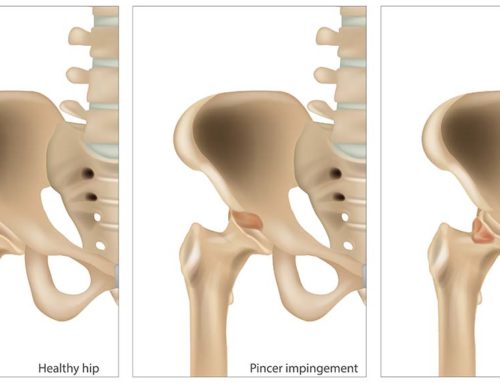Sciatic Pain Treatment
Leg pain associated with back pain is quite common. In fact, it is estimated that 25-57% of all cases of lower back pain have associated leg pain. The pain can take various forms and be described in various ways. Common descriptors include numbness, tingling, pins and needles, weakness, toothache pain, a dull ache or even pain that is sharp, like a lightning bolt. There are various conditions associated with these symptoms (as discussed in previous blogs) such as disc herniation, lateral stenosis, degenerative disc disease, degenerative joint disease, spondylolisthesis and piriformis syndrome (to name a few). But why do we get the leg pain?
Pinched Nerve
The simplest mechanism to understand is the idea of a “pinched nerve”. Quite often the analogy of a garden hose is used. Similar to stepping on a garden hose, a nerve can get compressed or “pinched” by various structures in the spine. This can cause excruciating symptoms of sciatica down the leg, following the path of the sciatic nerve. In the case of piriformis syndrome, the nerve is actually compressed in the area of the buttocks, not near the spine.
Inflammation in the Lower Back
Regardless of the actual diagnosis, the area of the nerve root can get inflamed. That is, the area where the nerve leaves the spine can get “annoyed” by an injury to the surrounding tissue. Similar to when you twist your ankle and it balloons up with fluid, certain spinal injuries can do something similar. The swelling brings tiny cells to the area which can irritate the adjacent nerve causing the nerve to send pain down the leg.
Central Events
In a nutshell, if you’ve had symptoms of sciatica for a long time our brains and other “central” structures can actually change. Unfortunately, this can be a change for the worse as it may allow the leg symptoms to easily perpetuate…your brain views it as its “new normal”.
Referred Pain
Referred pain is a difficult concept to simplify. Generally speaking, a part of your spine can send a pain signal down your leg, but not necessarily along the nerve. The reason this happens stems all the way back to when we were just a collection of dividing cells…obviously, a little beyond the scope of this blog! The take-home point with referred pain is that the nerve is not necessarily carrying the pain signal continuously down the leg; treatment should be focused on the damaged tissue at the spine.
Treatment for Sciatica
As with any condition, sciatica treatment will depend on a number of individual factors. The treatments offered by our physiotherapists and chiropractors include laser therapy, acupuncture, manual treatments like spinal adjustments or mobilizations, soft tissue therapy (like active release technique) or the use of modalities like interferential current (IFC). For more information about our services or the approach that might be right for you, feel free to contact us at [email protected].
By: Dr. Kevin McIntyre B.Kin., DC
References
Schafer et al. Classification of low back-related leg pain – a proposed patho-mechanism-based approach. Manual Therapy 2009; 14: 222-230.









